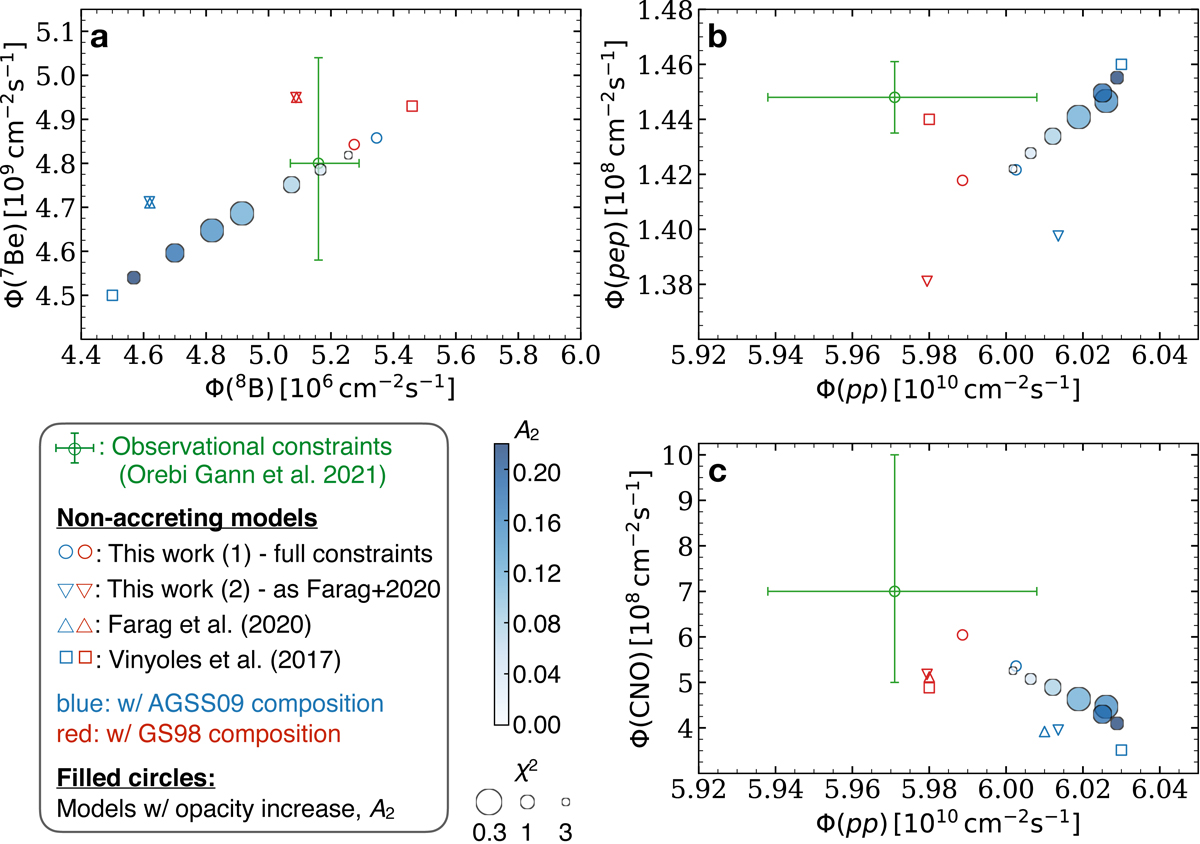Fig. 1.

Download original image
Neutrino fluxes obtained for standard solar models and models with opacity increases. Panels (a)–(c): the neutrino fluxes of Φ(7Be), Φ(8B), Φ(pp), Φ(pep), and Φ(CNO) = Φ(13N) + Φ(15O) + Φ(17F) (see Appendix A.3). The squares and the upward and downward pointing triangles show the standard solar models with three calibration constraints (see Appendix A.2), those from Vinyoles et al. (2017), Farag et al. (2020), and this study, respectively. The open circles show our standard solar models with six constraints. The Φ(pep) and Φ(17F) values are not available in Farag et al. (2020), and thus Φ(CNO) = Φ(13N) + Φ(15O) is used for their models. The blue and red colors indicate the models with low-Z AGSS09 and high-Z GS98 compositions, respectively. The filled circles show our models with opacity increase A2 (=0, 0.04, 0.08, 0.12, 0.15, 0.18, and 0.22), which is shown by the color, with the size χ2, which is ≲0.5 for A2 ∈ [0.12, 0.18]. The green circles with error bars show the observed constraints (Orebi Gann et al. 2021).
Current usage metrics show cumulative count of Article Views (full-text article views including HTML views, PDF and ePub downloads, according to the available data) and Abstracts Views on Vision4Press platform.
Data correspond to usage on the plateform after 2015. The current usage metrics is available 48-96 hours after online publication and is updated daily on week days.
Initial download of the metrics may take a while.


